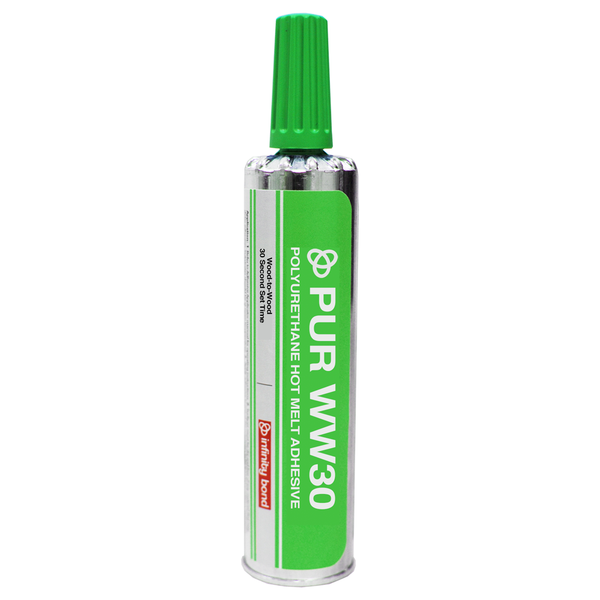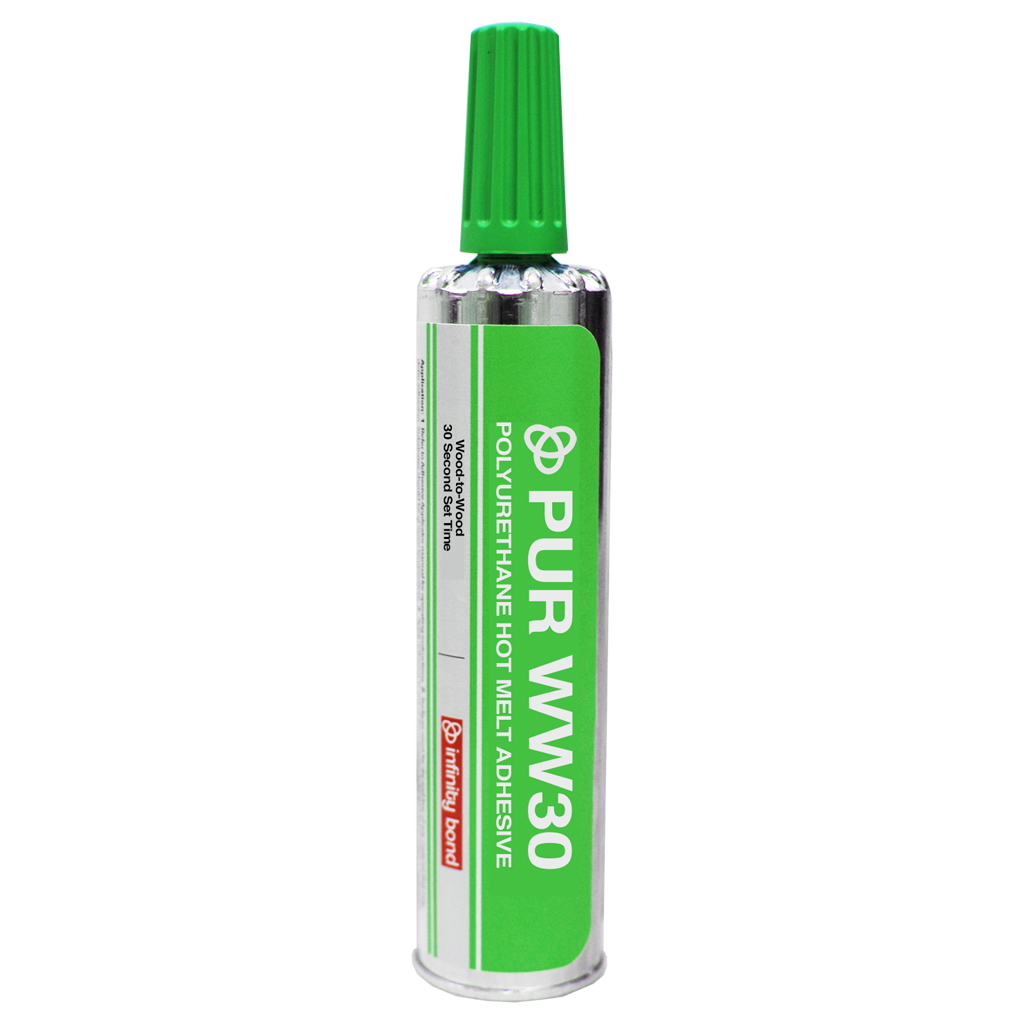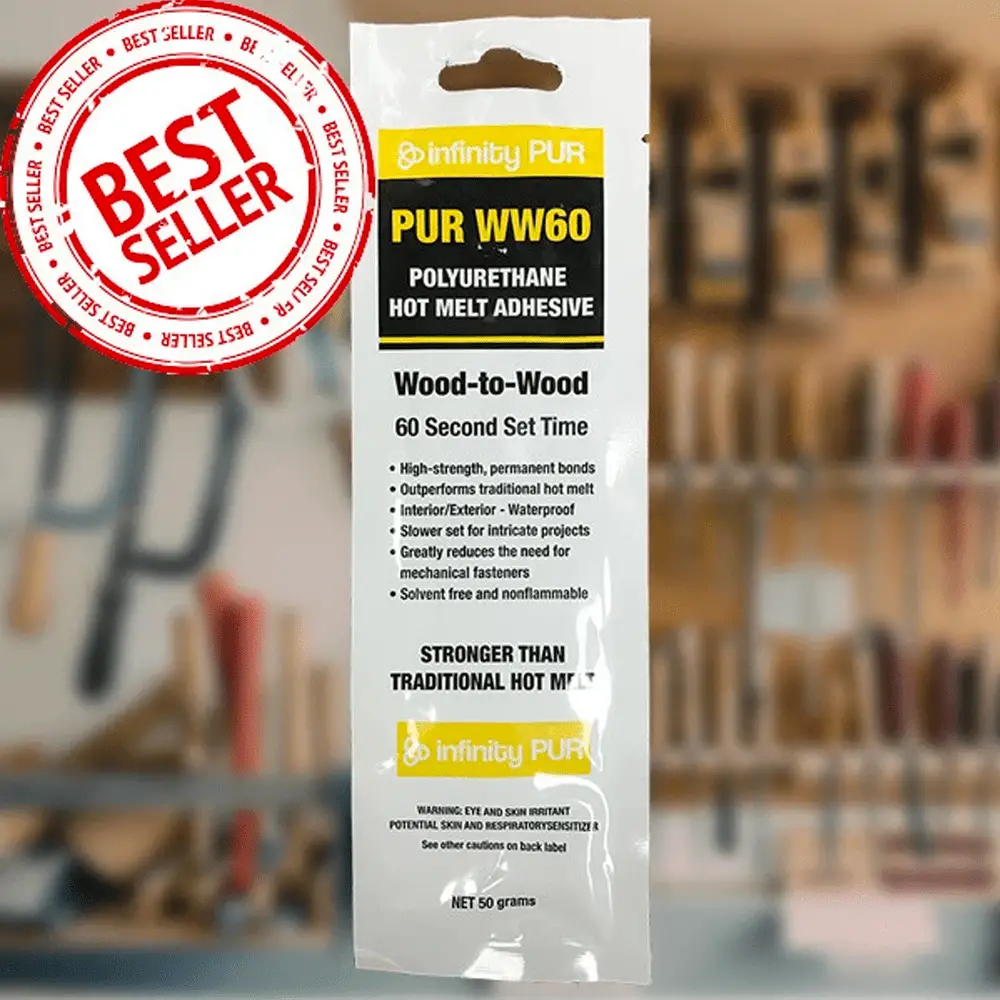Hot melt glue sticks are a popular adhesive choice for woodworking projects. They provide a strong bond and are easy to use.
Woodworkers often rely on hot melt glue sticks for their quick drying time and versatility in bonding various wood surfaces together. With their heat-sensitive properties, hot melt glue sticks can be easily applied using a glue gun or other suitable applicator, making them a convenient option for woodworking enthusiasts.
Their effectiveness and reliability make them a go-to adhesive solution for many woodworking tasks, ensuring that projects are securely and durably fastened.

Credit: glsproducts.com
The Science Behind Hot Melt Glue Sticks
Hot melt glue sticks are a popular adhesive choice for various applications, especially in the woodworking industry. Understanding the science behind these glue sticks can help us appreciate their unique properties and effectiveness. In this article, we will explore the adhesion properties and chemical composition of hot melt glue sticks for wood.
Adhesion Properties
The adhesion properties of hot melt glue sticks play a crucial role in their performance. These sticks are specifically designed to provide a strong bond between two surfaces when heated and applied. The glue quickly solidifies upon cooling, creating a highly durable and reliable bond.
One of the key advantages of hot melt glue sticks is their ability to adhere to various materials, including wood, fabric, plastic, and metal. This versatility makes them a popular choice for different woodworking applications. Whether you’re joining wooden pieces, attaching embellishments, or repairing furniture, hot melt glue sticks offer a reliable bond that withstands the test of time.
Chemical Composition
The chemical composition of hot melt glue sticks consists of thermoplastic polymers, antioxidants, and other additives. The main component, the thermoplastic polymer, accounts for its ability to melt and solidify at specific temperatures.
The most commonly used thermoplastic polymer in hot melt glue sticks is ethylene-vinyl acetate (EVA). EVA has excellent adhesion properties, along with high strength and flexibility, making it an ideal choice for woodworking applications. Additionally, EVA-based hot melt glue sticks offer a fast setting time, allowing for quick and efficient bonding.
Antioxidants are also incorporated into the glue sticks to improve their stability and prevent degradation due to exposure to heat and light. These additives ensure that the glue sticks maintain their adhesive properties over time, resulting in a long-lasting bond.
In addition to EVA and antioxidants, hot melt glue sticks may contain other additives such as tackifiers to enhance the tackiness of the glue and plasticizers to improve flexibility. These additives contribute to the overall performance and versatility of hot melt glue sticks.
In Conclusion
Hot melt glue sticks offer a powerful bonding solution for woodworking projects. Their adhesion properties, combined with their unique chemical composition, make them a reliable and efficient adhesive choice. Whether you’re a professional woodworker or a DIY enthusiast, hot melt glue sticks can help you achieve strong and durable bonds in your projects.
Advantages Of Hot Melt Glue Sticks For Wood
In this section, we will explore the advantages of using hot melt glue sticks for wood projects. Hot melt glue sticks offer a range of benefits that make them a popular choice among woodworkers and craftsmen. From quick bonding to their VOC-free composition, hot melt glue sticks provide a reliable and versatile solution for all your woodworking needs.
Quick Bonding
One of the main advantages of using hot melt glue sticks for wood is their ability to bond quickly. These glue sticks can be melted and applied to the surfaces, creating an instant bond. This saves valuable time, allowing you to complete your projects efficiently. Whether you are working on small DIY projects or larger woodworking tasks, hot melt glue sticks ensure a strong and durable bond in no time.
No Vocs
Hot melt glue sticks are also advantageous because they do not contain any volatile organic compounds (VOCs). VOCs are harmful chemicals often found in traditional adhesives, which can be detrimental to your health and the environment. By using hot melt glue sticks for wood, you can work without worrying about toxic fumes or long-term exposure to harmful substances. This not only creates a safer workspace but also promotes environmental sustainability.
Factors To Consider When Using Hot Melt Glue Sticks On Wood
When using hot melt glue sticks on wood, it is vital to consider various factors to ensure successful adhesion and a strong bond. Understanding the compatibility of different wood types, maintaining the appropriate temperature during application, and considering the specific application are essential for achieving optimal results with hot melt glue sticks on wood.
Wood Type Compatibility
Each type of wood has its unique characteristics such as porousness, density, and natural oils content. It is crucial to consider the compatibility of hot melt glue sticks with the specific wood type being used. Some woods may require a specialized adhesive formulation for effective adhesion, while others may readily bond with standard hot melt glue sticks. Always ensure that the glue selected is suitable for the intended wood type to achieve a reliable and durable bond.
Temperature And Application
The temperature at which hot melt glue sticks are applied plays a critical role in the bonding process. Different wood species may require varying application temperatures to achieve optimal adhesion. It is essential to follow the manufacturer’s guidelines regarding the recommended temperature range for the specific type of wood. Additionally, considering the application method and ensuring an even distribution of the adhesive is crucial for securing a strong bond.
I hope you find this example helpful. Let me know if you need further assistance.

Credit: www.infinitybond.com
Tips For Maximizing Bonding Strength
Surface Preparation
Before applying hot melt glue sticks on wood surfaces, ensure they are clean and free from dust or grease.
Proper Application Techniques
Follow these guidelines to ensure a strong bond when using hot melt glue sticks on wood:
- Apply even pressure while gluing to ensure proper adhesion.
- Ensure the temperature of the glue gun is suitable for the specific type of hot melt glue stick being used.
- Allow sufficient time for the glue to set and fully cure before handling the bonded pieces.
Applications Of Hot Melt Glue Sticks In Woodworking
Hot melt glue sticks are versatile and efficient tools for a variety of woodworking projects. They offer a strong and reliable bond, making them ideal for a range of applications in woodworking. Let’s explore some key H3 headings highlighting the Applications of Hot Melt Glue Sticks in Woodworking.
Carpentry Projects
- Quickly assemble wooden structures
- Secure joints and corners effectively
- Repair and fill gaps in wood pieces seamlessly
Furniture Assembly
- Bond wooden pieces for furniture construction
- Secure upholstery and trim on furniture
- Fix loose veneer or edges on wooden furniture

Credit: www.infinitybond.com
Frequently Asked Questions Of Hot Melt Glue Sticks For Wood
Does Hot Melt Glue Stick To Wood?
Yes, hot melt glue sticks to wood, providing a strong and durable bond for various woodworking projects.
Which Glue Stick Is Best For Wood?
The best glue stick for wood is a PVA (polyvinyl acetate) glue stick. It provides a strong bond and is easy to use. Make sure to choose a glue stick that is specifically formulated for wood projects.
Will Hot Glue Hold On Wood?
Yes, hot glue can hold on wood. It forms a strong bond and is commonly used for woodworking projects. Its adhesive properties make it suitable for various wood surfaces, including furniture, crafts, and decorations.
What Doesn’t Stick To Hot Melt Glue?
Hot melt glue does not stick to surfaces that are greasy, oily, or dusty. It also does not adhere well to silicone, fluorinated plastics, or non-polar materials.
Conclusion
To sum up, hot melt glue sticks are a versatile and efficient solution for woodworking projects. With their quick drying and strong adhesion properties, they provide a reliable and user-friendly bonding method for woodworkers of all skill levels. Whether for DIY or professional applications, hot melt glue sticks are a valuable tool to enhance productivity and precision in woodworking.


